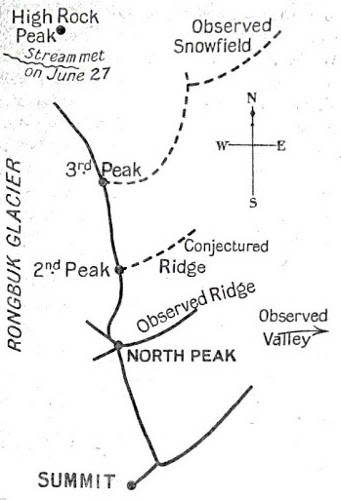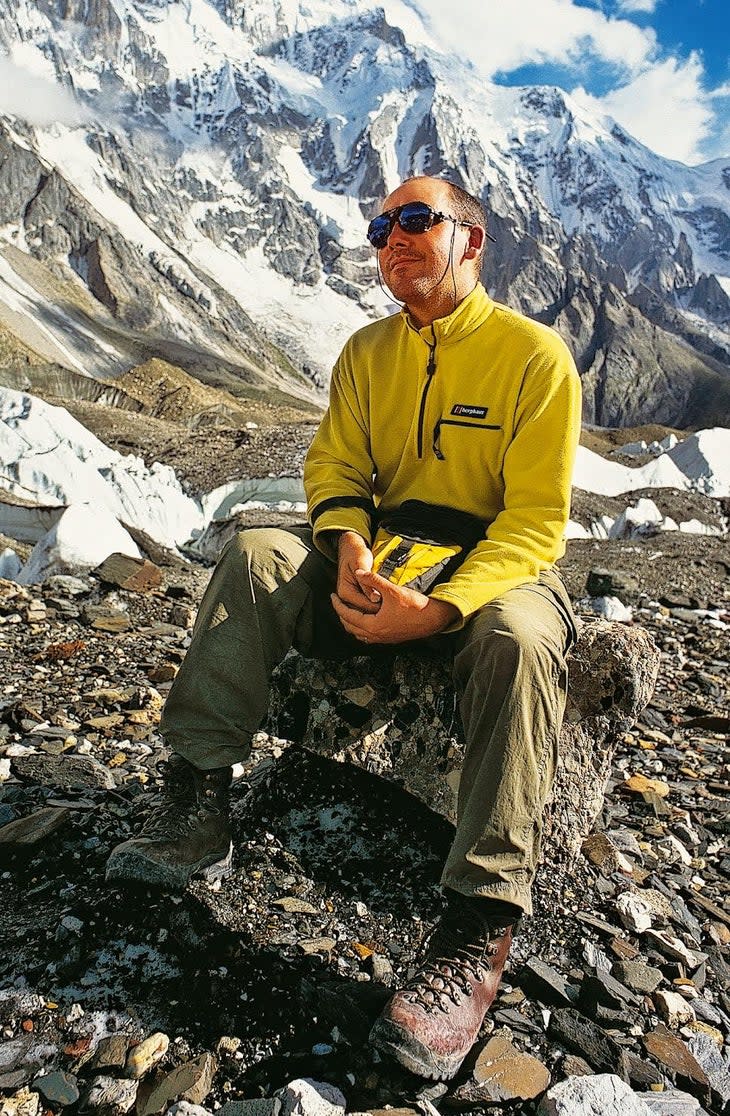How Does Mallory the Myth Compare to Mallory the Man?
- Oops!Something went wrong.Please try again later.
- Oops!Something went wrong.Please try again later.
This article originally appeared on Climbing

This essay is being released alongside Mick Conefrey’s latest book, Everest 1922: The Epic Story of the First Attempt on the World's Highest Mountain. Conefrey, an award-winning author, argues that while the 1922 British attempt on Everest has been overlooked in recent years--with much of the historical and literary attention focused on the second attempt in 1924--it was the more historically momentous of the two attempts, setting the precedent for siege-style mountaineering, marking the beginning of the oxygen controversy, and elevating George Mallory to an international hero whose actions and writings have become a crucial part of Everest's mythology. Like it’s later counterpart, the expedition ended in tragedy: On their third bid for the top, Mallory’s party was hit by an avalanche that left seven men dead.
You can order Everest 1922: The Epic Story of the First Attempt on the World's Highest Mountain here.
*
In 1920 George Mallory was a charismatic teacher at a British public school with a small but intense circle of friends and admirers. By the end of 1922 he was the most famous climber in Britain, an in-demand public speaker, and a published author. Less than two years later, he was missing and presumed dead on Everest. Like the millions of young soldiers killed during the Great War, he was one of the glorious dead, forever entombed near the summit of Everest--"the finest cenotaph in the world," according to his friend Howard Somervell.
Even though Edmund Hillary and Tenzing Norgay can claim the honors of being the first men to reach the summit, George Mallory is just as famous, his name forever associated with Everest and the mystery of whether he and his protege Sandy Irvine died on the way up or on the way down. Like James Dean, Jim Morrison, and Jimi Hendrix, Mallory is one of the good who died young, and in the years since his disappearance, a powerful mythology has grown up around him, generating countless books and articles, and even several expeditions. It's easy to see the roots of the myth: Mallory was handsome, well-spoken, and a brilliant climber. He was the beating heart of three British expeditions, who kept on pushing forward when others would have turned back. But how does the man really compare to the myth?
In many ways, Mallory was a typical middle class mountaineer of his day. The son of a clergyman, he learned to climb at Winchester public school, went on to Cambridge, and then began working as a teacher at Charterhouse, another public school. During the First World War he served as an artillery officer before returning home and resuming his career as a teacher. Then in 1921, everything changed. Mallory, thanks to his reputation as a Peak district climber, was invited to join a British team making the first reconnaissance of Mount Everest--a mountain that no Europeans had yet stood beneath. He was later invited back to Everest in 1922 and 1924. So much, so typical. But in many other ways Mallory was very different from the other soldiers and Alpine Club men who joined him on those expeditions.
For one thing, his friends were varied and unconventional: Duncan Grant, the painter, Lytton Strachey the historian, Robert Graves the poet and novelist, John Maynard Keynes, the economist, Rupert Brooke, the poet. Many of them were drawn from the so-called Bloomsbury group of artists and intellectuals who fell in and out of love with each other while dreaming of personal and cultural revolution and of making a name for themselves. Aged 22, Mallory fell in love with James Strachey, the brother of Lytton Strachey, the openly gay historian and author of Eminent Victorians, a highly influential work of biography. Age 27, Mallory fell in with Ruth Turner, the daughter of an Arts and Crafts architect, and had three children with her.
Unlike most climbers of the period, Mallory was hopeless with technical things, whether they were Primus stoves or cameras, but he was, like many of his friends, a gifted writer, and his essays about the artistry and aesthetics of mountaineering went a long way in building his reputation, both during his life and after it. For the 1922 official Everest account, he penned one of the most lyrical descriptions of a mountain ever written, describing how it emerged from the mist like a "preposterous triangular lump....now one fragment, now another through the floating rifts, until far higher in the sky than imagination had dared suggest the white summit of Everest appeared."

But even though his name has been forever tied to Everest, climbing was not Mallory's sole passion. Indeed, in both 1922 and 1924, he only joined the British expeditions at the last moment and after a lot of soul searching. Quite simply, he had other things to do. A socialist Fabian, he wanted to change the world, bring education to the masses, and solve the problem of Irish Home Rule while bringing up his family as best as he could.
When he finally got to the Himalayas, however, it all changed. On an expedition, his focus was absolutely singular: to get to the top of the mountain. He wasn't interested in Tibetan culture, he didn't want to collect Himalayan flowers and fauna, all he wanted to do was get to the top. In 1924, his much younger climbing partner, Andrew Irvine, regularly complained to his diary that Mallory got up too early, exercised too hard, and yomped up the glaciers far too quickly.
In both 1922 and 1924 it was Mallory who agitated for a third attempt after the first two summit bids had been unsuccessful. In both years the results were ultimately disastrous. In 1922 seven porters died in an avalanche just below the North Col with Mallory and the British climbers a few feet above them. In 1924 Mallory himself disappeared high on the mountain, after making a questionable decision to take Andrew Irvine with him even though Irvine was the least experienced climber on the team.
Mallory's flaws were obvious to those around him. After the avalanche in 1922, the expedition doctor, Tom Longstaff, called him a "great stout hearted baby" and the expedition leader, Charles Bruce, questioned his judgment, noting that he was a "great dear but he forgets his boots on all occasions." When Mallory returned for the third time in 1924, he was easily the most experienced climber on the British team, but he wasn't even made deputy expedition leader.
And yet for all his flaws and his slightly chaotic style, Mallory's charisma and obsessive pursuit of the summit won over contemporary detractors and future admirers alike. In comparison to Robert Falcon Scott, who died during the Race to the South Pole, history has been kind to Mallory: In the 1970s a damning biography by Roland Huntford transformed history's view of Scott from British hero to an incompetent amateur, a donkey who like the Generals of WWI lead his polar lions to their deaths. Mallory's reputation by contrast has survived relatively unscathed, his failings forgiven, his mysterious end only adding fuel to our fascination.
For the last couple of years the American director Doug Liman has been trying to get an Everest movie off the ground. Initially Tom Hardy was touted to play Mallory, but now Ewan MacGregor has been signed up for the role. There are Facebook pages dedicated to Mallory, and for the last few years an appeal has been running to build a bronze statue of him in his home county of Cheshire. With 1922 marking the 100th anniversary of Mallory's first attempt on Everest, and 1924 marking the centenary of death, it seems quite unlikely that the myth of Mallory will fade away any time soon

About the Author:
Mick Conefrey is an award-winning writer and documentary film maker. He created the landmark BBC series “The Race for Everest” to mark the sixtieth anniversary of the first ascent. His other books include The Adventurer's Handbook; Everest 1953, which won a Leggimontagna Award; and The Ghosts of K2, which won the National Outdoor Book Award.
His most recent book, Everest 1922: The Epic Story of the First Attempt on the World's Highest Mountain, argues that the 1922 attempt on Everest has been overlooked in recent years, with much of the historical and literary attention focused on the second attempt in 1924. He argues that this initial expedition is of greater significance, setting the precedent for siege-style mountaineering, marking the beginning of the oxygen controversy, and elevating George Mallory to an international hero whose actions and writings have become a crucial part of Everest's mythology. The expedition ended in tragedy when, on their third bid for the top, Mallory’s party was hit by an avalanche that left seven men dead.
Using diaries, letters, and unpublished accounts, Conefrey explores the motivations and private dramas of the key individuals--detailing their backroom politics and bitter rivalries--who masterminded this epic adventure. Released alongside the centenary of the expedition, Everest 1922 details the controversy, drama, tragedy, and courage that marked the first ever expedition to summit the world's highest peak.
For exclusive access to all of our fitness, gear, adventure, and travel stories, plus discounts on trips, events, and gear, sign up for Outside+ today.

